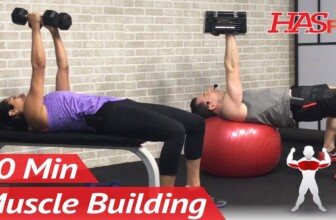Cognitive Behavioral Therapy (CBT) Explained | Techniques & Exercises for ADHD, Anxiety, & more
If you find yourself falling into negative thought patterns then you need to know about cognitive behavioral therapy also known as CBT
For mental health and substance use treatment options specifically designed for teens and young adults call (888) 241-7180 or visit https://www.sandstonecare.com/
Cognitive Behavioral Therapy (CBT) revolves around the idea that our thoughts, feelings, and behaviors are interconnected and that changing our thoughts and behaviors can lead to changes in how we feel.
There are four steps to cognitive behavioral therapy:
1. Identify Negative Thoughts:
In this step, you'll learn to become aware of your negative thoughts and automatic reactions to situations. This involves paying attention to the thoughts that accompany your feelings of distress, such as anxiety, sadness, or anger. Your therapist may encourage you to keep a thought diary or journal to track your thoughts and emotions in specific situations. By identifying these negative thoughts, you can begin to understand the connection between your thoughts, feelings, and behaviors.
Picture yourself as a detective solving a mystery. Just like a detective gathers clues to uncover the truth, you're gathering evidence by paying attention to your thoughts. Each negative thought is like a clue that helps you understand what's really going on inside your mind.
2. Challenge Negative Thoughts with Evidence:
Once you've identified your negative thoughts, the next step is to challenge them by examining the evidence that supports or contradicts them. You'll learn to question the accuracy and validity of your negative thoughts. Your therapist may guide you through a process of asking yourself questions such as, “Is there any evidence to support this thought?” “Are there alternative explanations?” “What would someone else say about this situation?” By critically evaluating your negative thoughts, you can begin to recognize when your thinking is distorted and gain a more balanced perspective.
Imagine you're a lawyer in a courtroom. Your negative thoughts are the arguments presented by the opposing side. Your job is to cross-examine these arguments, questioning their validity and reliability. Just like a lawyer, you gather evidence and present counterarguments to challenge the negative thoughts until the truth emerges.
3. Generate Alternative Thoughts:
Now, it's time to work on generating more realistic and balanced alternative thoughts to replace your negative ones. You'll learn to reframe your thinking in a way that is more adaptive and constructive. Your therapist may encourage you to brainstorm different interpretations of the situation, considering both positive and negative aspects. You'll learn to challenge your automatic negative thinking patterns and develop more flexible ways of thinking. By practicing generating alternative thoughts, you can gradually shift your thinking towards a more constructive and optimistic outlook.
Imagine you're looking at a photo of yourself. The photo is like your negative thoughts, showing just one angle of the situation. But just like you can take multiple photos from different angles, there are many ways to see the same situation. Each photo tells a different story. Similarly, when you generate alternative thoughts, you're like a photographer exploring different perspectives. By taking new “mental photos” from various angles, you can develop a more complete and balanced picture of the situation.
4. Develop Coping Strategies:
Finally, you'll learn to develop coping strategies to deal with your negative thoughts and emotions more effectively. This may involve learning relaxation techniques, problem-solving skills, assertiveness training, or social skills. Your therapist will help you identify specific coping strategies that are tailored to your individual needs and circumstances. You'll practice these strategies in therapy sessions and be encouraged to apply them in your daily life. By developing coping strategies, you'll build resilience and learn to manage your emotions and behaviors in more adaptive ways, ultimately leading to improved well-being and functioning.
Consider yourself as an adventurer preparing for a journey. Just as an adventurer equips themselves with tools and supplies for different challenges, you're equipping yourself with coping strategies to navigate life's ups and downs. Each coping strategy is like a tool in your backpack, ready to help you overcome obstacles and thrive on your journey.
Addressing negative thoughts can be challenging to do alone. Talking to someone, especially a licensed therapist or social worker, can help you shine a light on negative patterns of thinking that hold you back from pursuing your goals in life.
#cognitivebehavioraltherapy #mentalhealth #mentalhealthawareness
if you find yourself falling into negative thought patterns then you need to know about cognitive behavioral therapy also known as CBT cognitive behavioral therapy revolves around the idea that our thoughts feelings and behaviors are interconnected and that changing our thoughts and behaviors can lead to changes in how we feel here are the four steps to cognitive behavioral therapy number one is to identify negative thoughts in this step you'll learn how to be become aware of your negative thoughts in automatic reactions to situations this involves paying attention to the thoughts that accompany your feelings of distress such as anxiety sadness or anger your therapist May encourage you to keep a thought diary or journal to track your thoughts and emotions in specific situations by identifying these negative thoughts you can begin to understand the connection between your thoughts feelings and behaviors picture yourself as a detective solving a mystery just like a detective gathers Clues to uncover the truth you're Gathering evidence by paying attention to your thoughts each negative thought is like a clue that helps you understand what's really going on inside your mind step number two is to challenge negative thoughts with evidence once you've identified your negative thoughts the next step is to challenge them by examining the evidence that supports or contradicts them you'll learn to question the accuracy and the more adaptive and constructive your therapist May encourage you to brainstorm different interpretations of the situation considering both positive and negative aspects you'll learn to challenge your automatic negative thinking patterns and develop more flexible ways of thinking by practicing generating alternative thoughts you can gradually shift your thinking towards a more constructive and optimistic Outlook imagine you're looking at a photo of yourself the photo is like your negative thought showing just one angle of the situation but just like you can take multiple photos from different angles there are many ways to see the same situation each photo tells a different story similarly when you generate alternative thoughts you're like a photographer exploring different perspectives by taking new mental photos from various angles you can develop a more complete and balanced picture of the situation step number four develop coping strategies finally you'll learn to develop coping strategies to deal with your negative thoughts and emotions more effectively this may involve learning relaxation techniques problem solving skills assertiveness training or social skills your therapist will help you identify specific coping strategies that are tailored to your individual needs and circumstances you'll practice these strategies in therapy sessions and be encouraged to apply them in your daily life consider yourself as an adventurer preparing for a journey just as an adventurer equips themselves with tools and supplies for different challenges you're equipping yourself with coping strategies to navigate life's ups and downs each coping strategy is like a tool in your backpack ready to help you overcome obstacles and thrive on your journey addressing negative thoughts can be challenging to do alone talking to someone especially a licensed therapist or social worker can help you shine a light on negative patterns of thinking that hold you back from pursuing your goals in life if you want to learn more about mental health and substance used treatment options specifically designed for teens and young adults then visit Sandstone care.com or a call using the number below we'll get to know you and your unique situation and connect you with the support you need even if it's not with us change is possible and Sandstone care is here to help
#Cognitive #Behavioral #Therapy #CBT #Explained #Techniques #Exercises #ADHD #Anxiety
source











Learn about the types of cognitive distortions that CBT can help👇
https://youtu.be/OuUJmml2sjw
Great Analogies!!!
Criminal part Europa
Hi . I’m struggling with anxiety . Can you help me please?
What is the background music?
4 steps breakdown of CBT
1. IDENTIFY
negative
-thoughts
-emotions
-behaviours
2. CHALLENGE WITH EVIDENCE
-Challenge Step 1 and prove their validity and reliability
-Either reality or delusions.
3. GENERATE ALTERNATIVE THOUGHTS
-Create more povs & positive thoughts
-Balanced understanding of situation
-Alternative approaches.
4. COPING STRATEGIES
Broad categories
-Relaxation
-Problem Solving
-Assertiveness
-Social Skills
❤
Dare Key
I'm an LPC. This is such a great video and introduction to the benefits of CBT!
Wilhelmine Throughway
So an other words,” fall in line with societal standards of apathy”